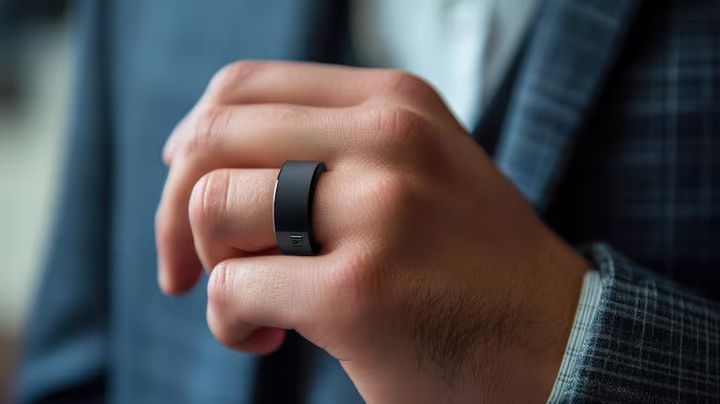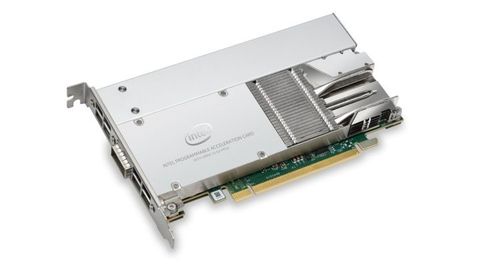
Explore the Details: A Deep Dive into Smart Ring Technology
A smart ring is a discreet, wearable electronic device designed to be worn on a finger. It houses a variety of sensors and a tiny computer to continuously track and analyze health and wellness metrics. While smartwatches and fitness bands have dominated the wearable technology market for years, the smart ring has emerged as a compelling alternative, focusing on a more comfortable and subtle form factor. It is the evolution of personal health monitoring, moving away from bulky devices that might be distracting or uncomfortable, especially during sleep.
The Importance of Smart Rings for Wellness

In 2025, smart rings are more than just a passing trend; they are a significant tool for modern wellness that empowers individuals to take a more proactive role in their health. Their discreet nature and continuous data collection solve several key problems for today's health-conscious consumer.
Who It Affects
Health-Conscious Individuals: Those who want detailed, continuous data to optimize their daily routine, from sleep and exercise to stress management.
Athletes and Fitness Enthusiasts: They use smart rings to monitor recovery, fatigue, and readiness for physical activity, helping them to train more effectively and prevent overexertion.
Individuals with Specific Health Concerns: People looking to track metrics like sleep apnea, heart rate variability for stress, or body temperature for illness and menstrual cycle tracking find smart rings invaluable.
General Consumers: Anyone who desires a simple, non-distracting way to monitor their basic well-being without the constant notifications of a smartwatch.
Problems It Solves
Discomfort and Digital Distraction: Smartwatches, with their size and constant alerts, can be cumbersome and interruptive. Smart rings solve this by offering a lightweight, screenless device that provides health data on a user’s terms, via a companion app, without constant pings.
Incomplete Health Picture: Many fitness trackers are not worn 24/7, leading to gaps in data, especially during sleep. The comfortable design of a smart ring encourages continuous wear, providing a complete picture of a user's health from night to day.
Lack of Actionable Insights: Raw data like steps or calories can be overwhelming. Smart rings, through their advanced algorithms, process this data to provide actionable insights and personalized recommendations, such as a "readiness score" that advises on whether to push for a workout or prioritize rest.
Privacy and Security Concerns: Smart rings are designed to be a private health tool. By not having a public-facing display, they maintain a user's privacy while still allowing them to monitor their health. They solve the problem of public displays of sensitive data.
Recent Updates and Trends in the Smart Ring Market
The smart ring market has seen rapid growth and significant innovation, with several key trends shaping the industry in late 2024 and mid-2025.
Major Tech Companies Entering the Market: The most significant development is the entry of major technology giants into the smart ring space. The Samsung Galaxy Ring, announced with features like AI-powered wellness coaching and seamless integration with the Samsung Health ecosystem, has validated the category and introduced a major competitor. Similarly, news of patents from other tech giants has fueled speculation about future market entrants, signaling a shift from a niche market to a mainstream consumer product.
Enhanced Sensor Technology and Metrics: Smart rings are becoming more powerful with the integration of advanced sensors. Devices released in 2025 are focusing on improved accuracy for a wider range of metrics, including body temperature, blood oxygen saturation (SpO2), and heart rate variability (HRV) for stress tracking. Some new models are even exploring more complex metrics like blood sugar monitoring, though this remains a subject of caution and regulatory oversight.
AI-Powered Personalization: The companion apps for smart rings are now heavily leveraging artificial intelligence. AI algorithms analyze the vast amount of data collected to provide highly personalized health coaching and predictions. For instance, an AI-powered app might predict the onset of a cold based on a change in a user’s body temperature and heart rate variability, or offer specific sleep hygiene tips based on their nightly patterns.
Expanding Functionality Beyond Wellness: While health is the primary focus, smart rings are beginning to integrate other functionalities. Some models are incorporating Near Field Communication (NFC) for contactless payments, allowing users to make purchases with a simple tap of their finger. Others are exploring gesture control, enabling the ring to act as a remote for smart home devices, media playback, or a camera shutter.
Laws, Policies, and Regulations
The highly personal nature of the data collected by smart rings means their development and use are affected by various laws, policies, and regulations, particularly those concerning data privacy and medical devices.
Data Privacy Laws: The health data collected by smart rings is highly sensitive. The Digital Personal Data Protection Act, 2023, in India, and the General Data Protection Regulation (GDPR) in Europe, are crucial. These laws mandate that companies must obtain explicit consent from users to collect and process their personal data, including health metrics. Companies are also required to be transparent about how data is used and protected, and users must have the right to access and delete their data.
Medical Device Regulation: A key distinction exists between a wellness device and a medical device. In the United States, for example, the U.S. Food and Drug Administration (FDA) has issued a safety communication warning consumers not to use smartwatches or smart rings that claim to measure blood glucose levels without piercing the skin, as these devices are not FDA-approved for that purpose. This highlights a critical regulatory boundary: if a device makes a medical claim, it must undergo rigorous testing and approval processes. Most smart rings are currently marketed as wellness and fitness trackers, not as medical diagnostic tools, which keeps them outside the scope of strict medical device regulations.
Tools and Resources
For those considering a smart ring or looking to make the most of an existing one, several tools and resources can be helpful.
Manufacturer Websites and Sizing Kits: The official websites of smart ring manufacturers are the best source for detailed product specifications, features, and pricing. Crucially, they often provide free sizing kits to help customers find the perfect fit before making a purchase. Since smart rings are worn all day and night, a comfortable fit is essential for both comfort and sensor accuracy.
Companion Apps: The true value of a smart ring lies in its companion app. These apps process the raw data and turn it into understandable insights, such as readiness scores, sleep stage analysis, and activity summaries. Many apps also include guided meditation sessions, breathing exercises, and personalized health coaching based on the data.
Online Forums and Community Groups: Platforms host communities where smart ring users share their experiences, tips for optimizing use, and comparisons between different models. These forums can provide honest, real-world insights that are not available on official product pages.
Professional Health and Fitness Apps: Some smart ring data can be exported to popular health and fitness apps. This allows users to integrate their smart ring data with information from other devices or fitness platforms, creating a more comprehensive overview of their health.
Frequently Asked Questions
Are smart rings as accurate as smartwatches?
For core metrics like heart rate and sleep tracking, many smart rings are considered to be highly accurate, sometimes even more so than smartwatches. This is because the finger provides a better location for a sensor to measure blood flow signals. However, smartwatches with built-in GPS are generally better for tracking activities like running or cycling.
How long does the battery last on a smart ring?
Most smart rings are designed for multi-day use on a single charge. The average battery life is typically between 4 to 7 days, but some models can last even longer. This extended battery life is a key advantage of smart rings over many smartwatches, which often require daily charging.
Can a smart ring be used for payments?
Yes, some smart rings are equipped with Near Field Communication (NFC) technology, which allows them to be used for contactless payments. Users can link their credit or debit card information to the ring and use it to tap and pay at compatible terminals, similar to a smartphone or smartwatch.
How do I find the right size?
Finding the right size is critical for both comfort and accuracy. Most manufacturers offer a sizing kit that is sent to a potential customer for free. This kit contains a series of plastic rings that help the user find the perfect fit for the finger on which they plan to wear the device.
Conclusion
Smart rings are a significant evolution in personal health monitoring, offering a discreet, powerful, and comfortable way to track well-being. By moving beyond the distractions of a screen and focusing on continuous, passive data collection, they provide users with valuable insights into their sleep, activity, and overall health. As technology continues to advance and major players enter the market, smart rings are poised to become an essential tool for anyone looking to take a more proactive approach to their health and wellness. They are a clear example of how technology can be seamlessly integrated into daily life to empower and inform individuals.










